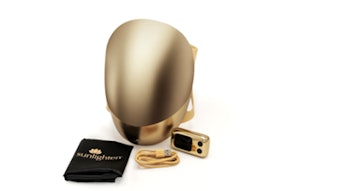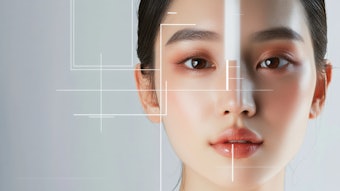
Editor’s Note: Skin Inc. magazine recommends that skin care professionals obtain the proper training before offering any new treatments or services.
Winter weather can stir up all kinds of trouble for the skin, often bringing with it a slew of seasonal villains that can leave skin feeling beat up.
There is Jack Frost, a cold character who often leaves skin feeling dull and dry, and his evil sidekick, Doctor Wind, who often joins Frost, whipping up icy blasts that cause skin to become brittle and crack. And do not forget Stress Man, a spirit with the unique ability to stir up hectic holiday situations that range from difficult family members to frantic fights for the season’s must-have toy.
Luckily, an elite force of specially trained experts exists to save the day. Known as The Esthetic Professionals, they fight to end their clients’ winter woes with the super arsenal of tools they have at their disposal. An esthetic professional’s utility belt comes equipped with a variety of skin-rejuvenating treatments suited for any skin situation. Dry skin, wrinkles, hyperpigmentation and acne breakouts do not stand a chance.
Carrot-E Chop Facial
During the winter, people bundle up to protect themselves from the harsh elements. However, the most sensitive area of skin is often left exposed: the face. This delicate area is the perfect target for cold winds, dry indoor air and icy temperatures that draw moisture from the skin. As a result, skin is often left dull, dry and dehydrated. You can help your clients battle the chilling effects of winter by providing them with a facial that is sure to please.
Carrots contain invaluable nutrients, such as iron, glucose, copper, vitamins C, D, E, K and, most importantly, carotene. Facials that contain carrots can help to nourish the skin in a natural and rejuvenating way. Clients will love the Carrot-E Chop Facial (see step-by-step Carrot-E Chop Facial How-to), which combines natural ingredients that are rich with potent antioxidants and vitamins that help moisturize dry skin cells while fighting off free radicals that cause aging and dull skin. Facials such as this are mild, and can be performed as often as three to four times a week to keep skin looking and feeling its best.
Super peels
Chemical peels are topically applied acids that cause a controlled shedding of skin layers, and aid in the restoration and rejuvenation of the skin’s surface. Depending on the level of rejuvenation desired, there are several types of peels that may be used to reach varying depths of the epidermis. This allows for the exposure of new layers and the creation of a fresh appearance.
Superficial peels are best suited for combating the damaging effects of winter villains. This type of peel is designed to help smooth rough, dry skin, remove sun damage and even-out skin tone. Because this is the mildest of the chemical peels, recovery is generally rapid and usually consists of minor flaking. Superficial peels should be repeated at regular intervals to maintain results.
Alpha hydroxy acid (AHA) peels remove dead cells from the surface of the skin and are made from naturally occurring acids found in fruits and other foods. They have been a popular means of rejuvenation for thousands of years. In fact, Cleopatra is said to have regularly bathed in sour goat’s milk to improve her skin. Egypt’s last pharaoh was clearly on to something: The lactic acid found in sour milk is one of several acids used in modern AHA peels. Other popular AHA peels include citric and glycolic acid.
For a more intense peel, try one that includes salicylic acid. If you have clients who deal with acne and breakouts, then this is the way to go. Salicylic acid not only causes skin to shed more rapidly, it also unclogs pores, shrinks pores, neutralizes bacteria and helps allow room for new cell growth. The average cost for a chemical peel procedure ranges from $100–130.
Speed of light
Intense pulsed light (IPL) photofacials are the perfect way to melt away winter’s chilling effects, as well as the fine lines often caused by holiday stress and worry. This remarkable treatment is also effective for clients with rosacea, enlarged pores, facial vascular redness, sun damage and hyperpigmentation.
IPL photofacials work by using a special handpiece to project a broad spectrum of light into the dermis. This process accelerates the skin’s natural regeneration process, helping the connective tissue below the surface to rebuild itself. The resulting collagen stimulation makes the skin’s surface smoother and more youthful.
Clients will also love the fact that it is a nonablative, noninvasive therapy that takes as few as 30 minutes with no downtime, which will make you your clients’ biggest hero.
Because four to six treatments are typically needed, each with an average cost of $350, esthetic professionals can expect revenue of at least $1,400 per client.
The laser ray of rejuvenation
This piece of equipment sounds just like something from Star Trek, but you can actually find it in many skin care businesses today, zapping away wrinkles, acne scars, stretch marks and enlarged pores.
Fractional laser skin resurfacing treatments are the most aggressive modality for skin rejuvenation that esthetic professionals have on their high-tech utility belts. Similar to the IPL photofacial, fractional laser skin resurfacing is a noninvasive, nonablative procedure that utilizes laser beam technology to decrease the appearance of fine lines and wrinkles. The lasers used are also designed to improve the skin’s texture, alleviate dark pigmentation and reduce the appearance of acne scars and tissue damage without the major downtime associated with other ablative laser resurfacing procedures.
The treatment works by dividing a laser beam into thousands of microbeams, which form narrow and deep columns of energy for absorption into the epidermal and dermal layers of the skin. Each microbeam targets and coagulates a fraction of the skin at a time, while leaving the surrounding tissue unharmed. The coagulated skin then begins to form new collagen and healthy tissue. This type of fractional laser precision dramatically shortens recovery time. Clients need only avoid strenuous exercise and wearing makeup for 48 hours.
The average cost of a single fractional laser treatment can range from $900–1,200. Clients who opt for this procedure typically need three to five treatments for maximum results, creating a maximum revenue of $6,000 per client.
Becoming a skin care superhero
There has always been a certain amount of confusion surrounding who can perform laser beauty treatments. Contrary to popular belief, cosmetic laser treatments are no longer limited to the realm of physicians and nurses. The truth is that esthetic professionals make up a majority of treatment providers supplying the consumer demand for laser procedures. With price points much higher than traditional esthetics, it is a natural career evolution to include laser treatments in your skill set. (Editor’s note: To find out whether your license is eligible to perform IPL and laser treatments, it is imperative to contact your state’s board. For a complete list of state boards, including direct contact information, log on to www.SkinInc.com/education/statelicensing.)
Every beauty superhero has a code to live by: “With great power comes great responsibility.” To ensure the safety of clients, and if it is within the scope of your license in your state, it is crucial to receive the proper training. By working to fight the villains that threaten skin’s health, skin care professionals can truly become skin care superheroes.
Louis Silberman is the president of National Laser Institute, one of the largest cosmetic laser training centers in North America. As an expert in medical esthetics, Silberman has been a driving force behind the development of comprehensive courses for professionals entering the cosmetic laser field.










